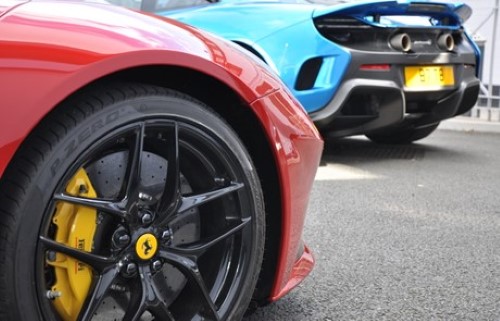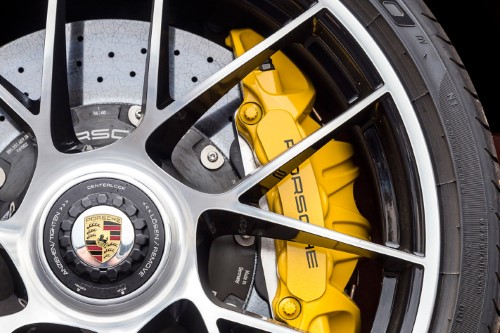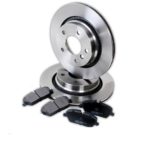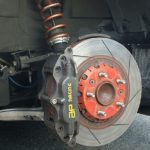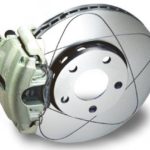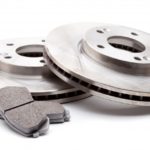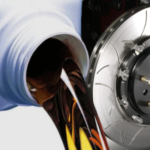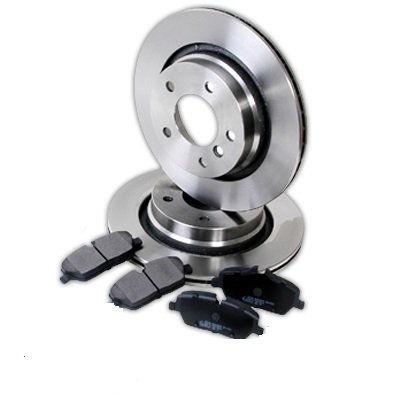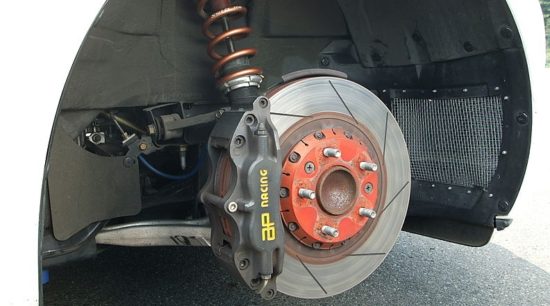Ceramic Disc Brakes: These are the most important things about them
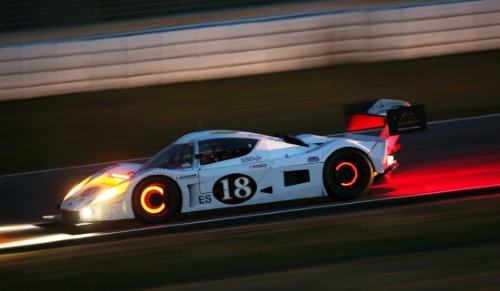
Ceramic discs
High-efficiency brake discs allow the world's fastest cars to stop at 400 km / h in just ten seconds
High speeds are not easy to achieve, especially when, as with the Bugatti Chiron, the bar is set at 420 km / h. But it is even harder to stop, because a large part of the kinetic energy (which grows with the square of the speed) is converted into heat. It is to a lesser extent transferred to the surrounding air, and to a greater extent it is 'absorbed' brake discs, which under heavy braking are heated to red hot. This quickly depletes the braking capabilities and causes fading, a process that causes the braking force to fall suddenly and brake failure.
A life-saving solution was offered by ceramics, which have long been proven in the brakes of planes and Formula One cars. Porsche, Ferrari, Mercedes-Benz, BMW-and, Jaguar. The technology of the future was transferred from racing cars to production cars. What is the ‘secret’ of this concept? The brake discs of production cars are made of cast iron.
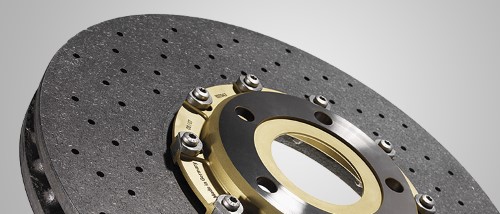
Ceramic discs
Ceramic brake discs were first proven in racing cars and airplanes, and then successfully applied in 'top-gun' cars.
Friction between the brake pads and the disc creates a moment of brake on the wheels, which in contact with the substrate translates into brake force and stops the car. The brakes convert the kinetic energy of the car into heat, and with intense and multiple braking the discs warm up, sometimes to a red-hot temperature (more than 850⁰C). These are limit values when the mechanical properties of the discs are significantly impaired. Then the strength and hardness drop significantly, and the wear and tear of the disc is accelerated.
What's worse is that the coefficient of friction then drops drastically and the infamous brake 'fading' occurs. Therefore, the efficiency of conventional brakes is limited and the pressure and friction between the brake pads and discs cannot be excessively increased. Experts from the world's leading car manufacturers have solved the problem by installing ceramic discs.
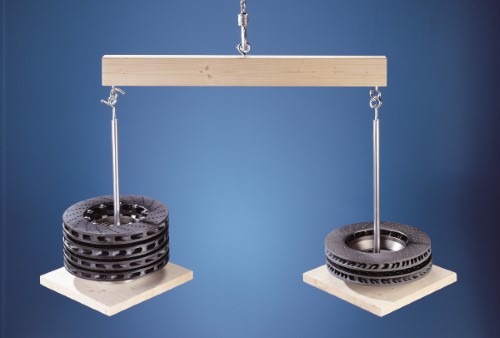
Ceramic discs
Ceramic discs withstand temperatures up to 1600⁰C, while at the same time being 70 percent lighter than classic ones, so they have smaller moments of inertia and produce less unproductive mass
Higher resistance to high temperatures allows a significant increase in pressure between the brake pads and discs, which with the same or similar coefficient of friction guarantees a significantly higher braking torque. This also allows a significant increase in braking intensity, without the risk of brake 'fading'. Lighter brake discs significantly reduce harmful unproductive masses and increase the dynamic stability of the car. The brake discs of the new passenger runners of the highest rank are made according to the 'recipe' of racing cars…
… Which only confirms that sports competitions (especially Formula 1) are a testing ground for the development of new technologies. In the first phase, parts of the discs are made of composite material by mixing carbon fibers with a liquid polymer. After hardening and gluing, a 'raw disk' is formed which is heated to 1000⁰C. Then the polymer particles evaporate and carbon atoms are pushed into their places. The process takes up to ten hours, resulting in a compact and highly resistant structure 'ready for the toughest tasks'.
Ceramic discs are made in special molds, in several phases, at high temperatures and pressures, which ensure its efficiency and durability.
To convert carbon disks to ceramic ones, a silicon process is required. At a temperature of 1420 karC, carbon disks are immersed in liquid silicon and absorbed like a sponge. A very hard and resistant silicon carbide is produced, which approaches the diamond by mechanical properties. Ceramic discs are half as light as traditional ones and easily withstand temperatures of over a thousand degrees Celsius. Higher resistance to high temperatures allows a considerable increase in the pressure between the brake pads and the discs.
The stability of the geometry (roughness) of the surface guarantees an increase in the coefficient of friction. This allows a significant increase in braking intensity, without the danger of brake 'fading'. In order to further improve the braking efficiency, grooves in the form of involute coils (as in the case of gears) are installed in the middle of the disc. Thus, when the discs rotate, a fan effect is created, which sucks fresh air into the center of the disc and expels it through the holes on the disc surfaces. Better and more thorough cooling increases the efficiency of brakes and braking, especially at high speeds, when the discs are exposed to excessive heating.
At 100 km / h, passenger cars can fit in just 30 meters, which is ten percent shorter than the best conventional wheels, with a deceleration of 1,5 g
This means that forces appear on the driver's body that are 50 percent greater than the weight of the body (it is taken over by the driver's seat belt and hands). Not to mention how important this is for driving safety, as stop meters often make the difference between luck and misfortune. Despite significantly more intensive braking, ceramic discs have incomparably greater durability and ensure more even braking. This is especially true when braking at speeds higher than 200 km / h. Long-term tests have shown that a 'lifespan' of over 300.000 km can be expected…
… Which is a contribution to improving and facilitating car maintenance. So at the grueling ‘24 Hours of Le Mans’ races there was no need to change the brake discs. Ceramic discs are much more resistant to high temperatures, but they also have much better properties at low temperatures. It is known that classic discs, while cold, have a much worse braking intensity, which can be very uncomfortable and dangerous. Ceramic discs react much faster, especially in critical situations when the brakes are activated after a long drive without braking (then the discs cool down completely).
In addition to high temperature resistance, the braking force of cold ceramic brakes is more than 25 percent higher than that of cold conventional disc brakes
This does not exhaust the advantages of less weight of ceramic discs. Lighter brake discs significantly reduce unnecessary weight and increase the dynamic stability of the car. The reduction of the total weight by 10 to 15 g should not be neglected either, because in sports cars every kilogram is important. The brake discs of the new Porsches are made according to the 'recipe' of racing cars, which only confirms that sports competitions (especially Formula 1) are a testing ground for the development of new technologies.
After proving itself in ultra-sports production cars, the ceramic brakes will surely extend to ‘ordinary’ cars as well. However, not everything is completely rosy, because the technology of ceramic discs is not cheap at all. The price increase should be calculated by more than 3000 euros per car, which is acceptable only for the most expensive cars.
Author: Zeljko Marusic
Retrieved from: autoportal.hr
Recommendation of similar texts:

Hi there, I am Mladen and I am an auto enthusiast. I started this blog years ago to help like minded people share information about latest cars, car servicing ideas, used car info, exotic cars, and auto technology. You will find helpful articles and videos on a wide variety of cars - Audi, Mercedes, Toyota, Porsche, Volvo, BMW and much more. Ping us if you have anything cool to share on latest cars or on how to make older cars more efficient, or just want to say hi!

